
Do you know what’s awful? Mushy canned asparagus. That’s what’s awful. You know what’s amazing? Dilly pickled asparagus. Especially dilly pickled asparagus that only takes a whopping five minutes of your time to make.
Tender, crunchy green spears laced with the tang of vinegar and dill. Oh man, my mouth is watering just thinking about them.
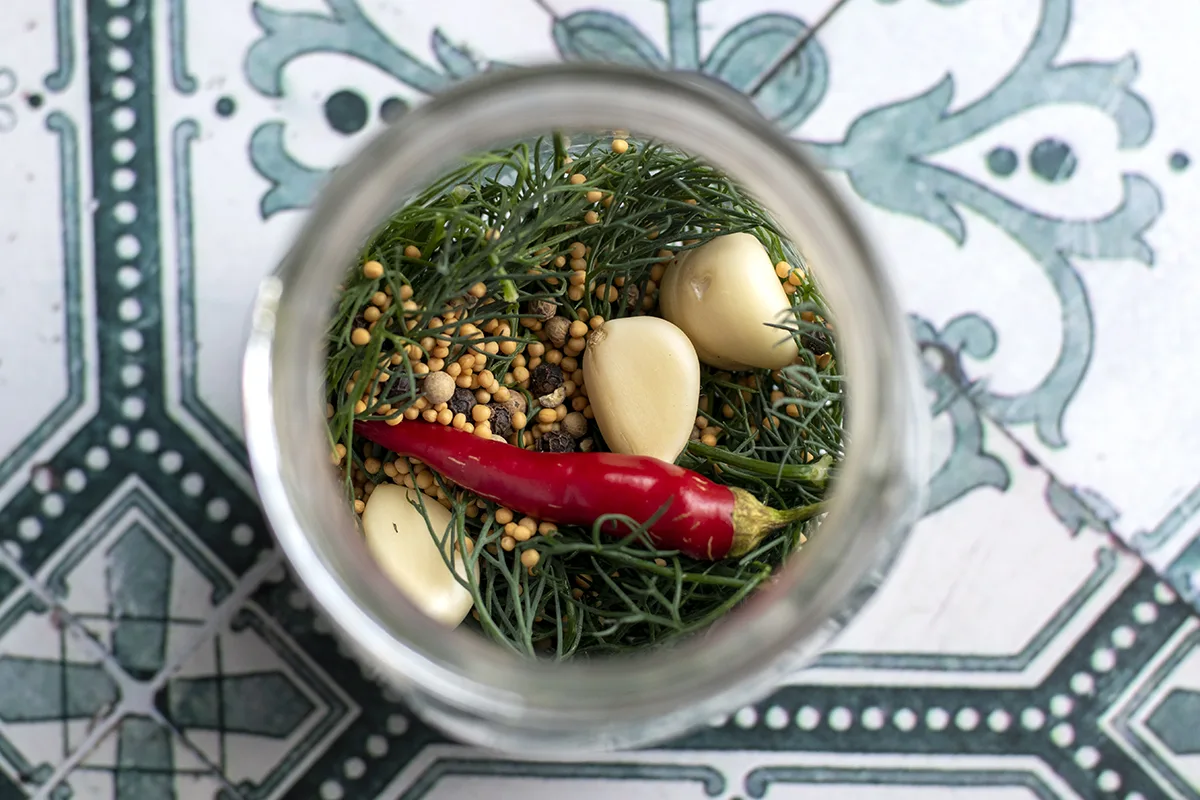
It only takes about five minutes and a handful of ingredients to make up a jar or two of these amazing pickles. They’re ready to eat in twenty-four hours, but if you can refrain from gobbling up the entire jar, they get even better after they hit the two-week mark.
Grab your asparagus and a mason jar or two, and let’s make some pickles!
Choosing Asparagus
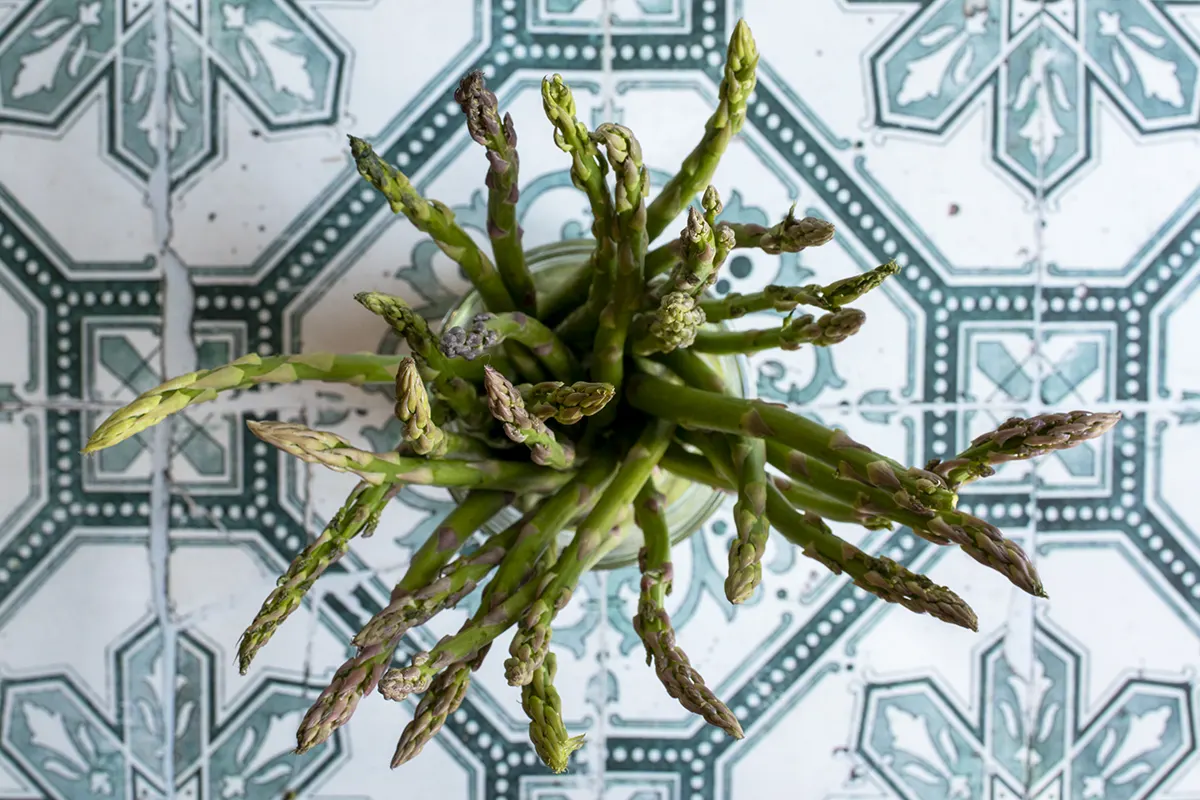
In Season
Let’s face it, despite asparagus being available in the supermarket all year long, you can’t beat the delicate new stalks that poke up from the ground every spring. Gardeners, if you’re lucky enough to have an asparagus bed, you know how quick the season goes.
So, the next time asparagus season rolls around, and you find yourself with a bumper crop, consider making up this recipe to enjoy quick, pickled asparagus long after you pick the final spear.
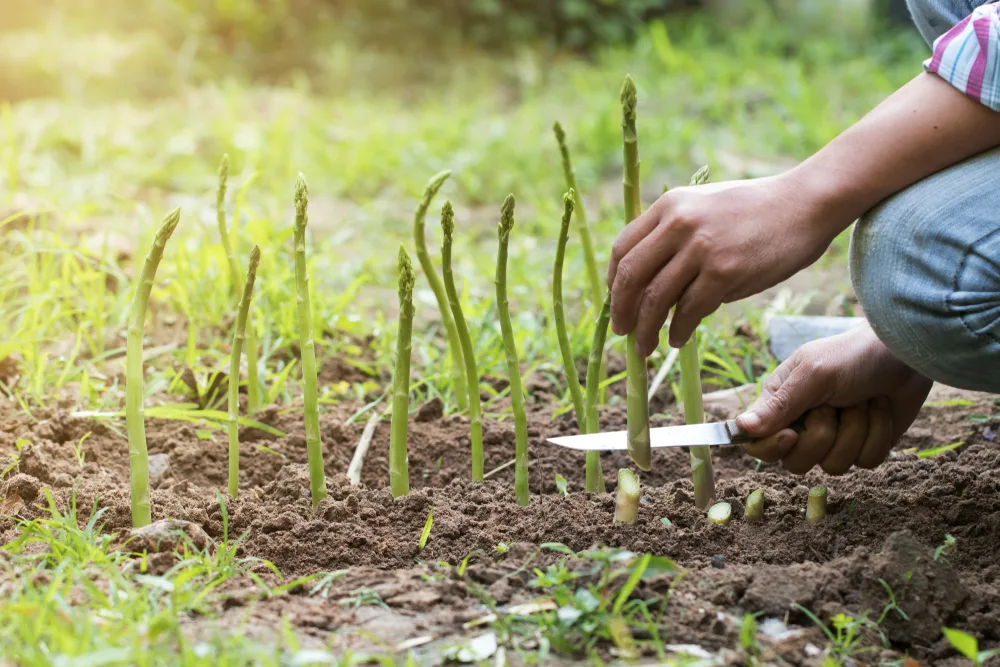
If you’ve always wanted to grow your own but don’t know where to start, Lydia will walk you through establishing an asparagus bed.
New asparagus beds can take between two to three years to produce regularly. But considering that asparagus beds can produce without much maintenance for thirty years or more, it’s worth the wait.
Out of Season
If you’re looking to make a batch of dilly pickled asparagus out of season, you’re in luck. Most supermarkets carry asparagus year-round. However, you’ll need to be a little choosy when buying asparagus out of season.
Look for bunches with slender stalks, as they make the best pickles. Larger stalks tend to be woody and fibrous; these are better suited for freezing. Skip asparagus with wrinkled or yellow-green stalks. Check the tips as well; you want tight, compact buds at the top. If you aren’t able to make your pickles right away, you’ll want to check out Cheryl’s guide on how to keep asparagus fresh longer.
Asparagus Prep
Rinse your asparagus well, and prep the bottoms. Once cut, the ends of asparagus can quickly turn dry and woody.
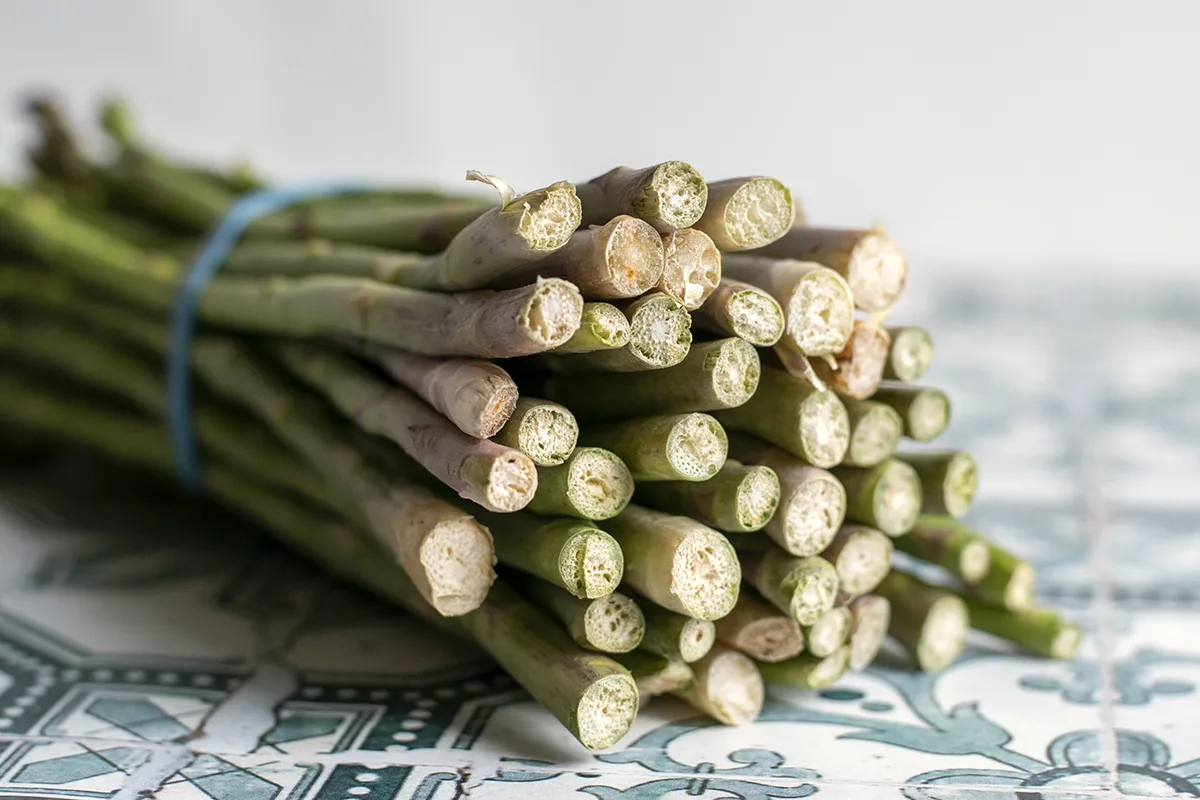
I used to be a big fan of snapping them by holding the bottom of the stalk and the bud and then bending until it snapped in two, but I always found there was still plenty of tasty, tender stalk left on the supposed woody end. These days I trim the bottoms and inspect them to ensure I have removed all the woody portions.
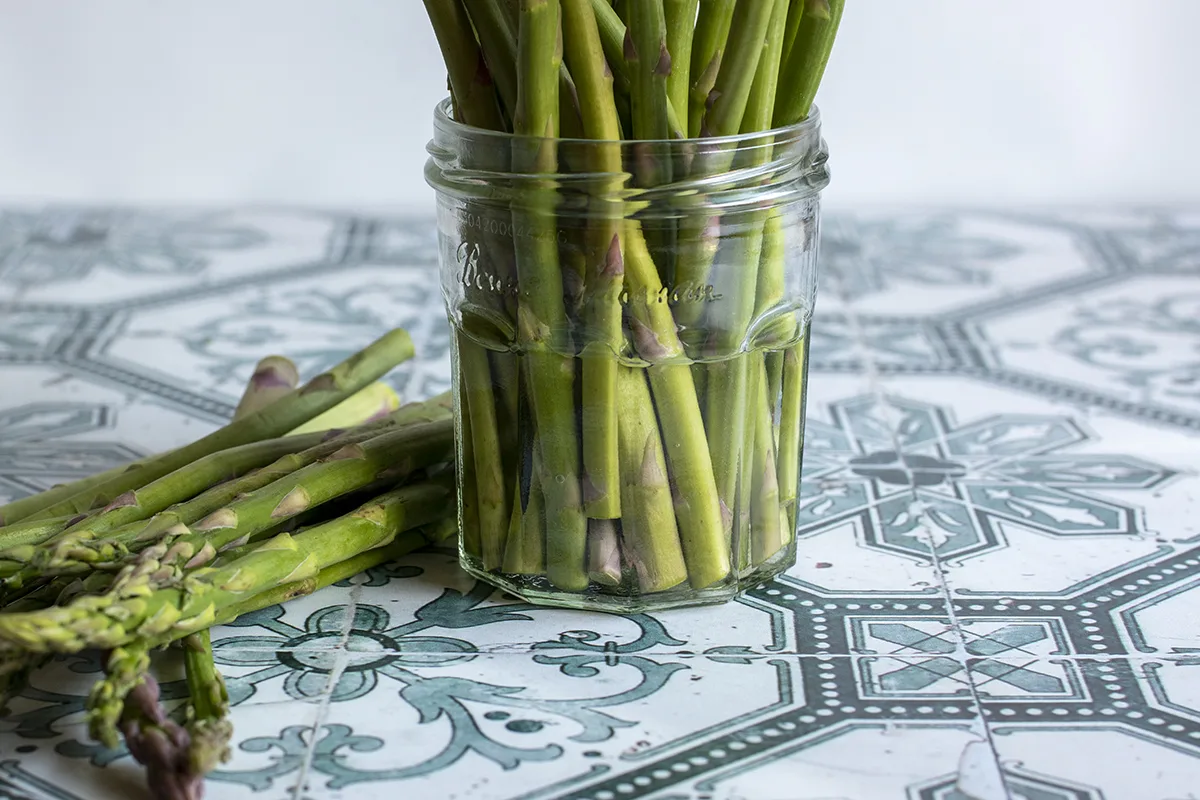
If your asparagus is a little limp after its journey from farm to store to your place, tuck them, trimmed end down, in a jar or glass of water. Put the jar in the fridge for an hour or two, and the cold water will perk them right up.
How do you like your pickles?
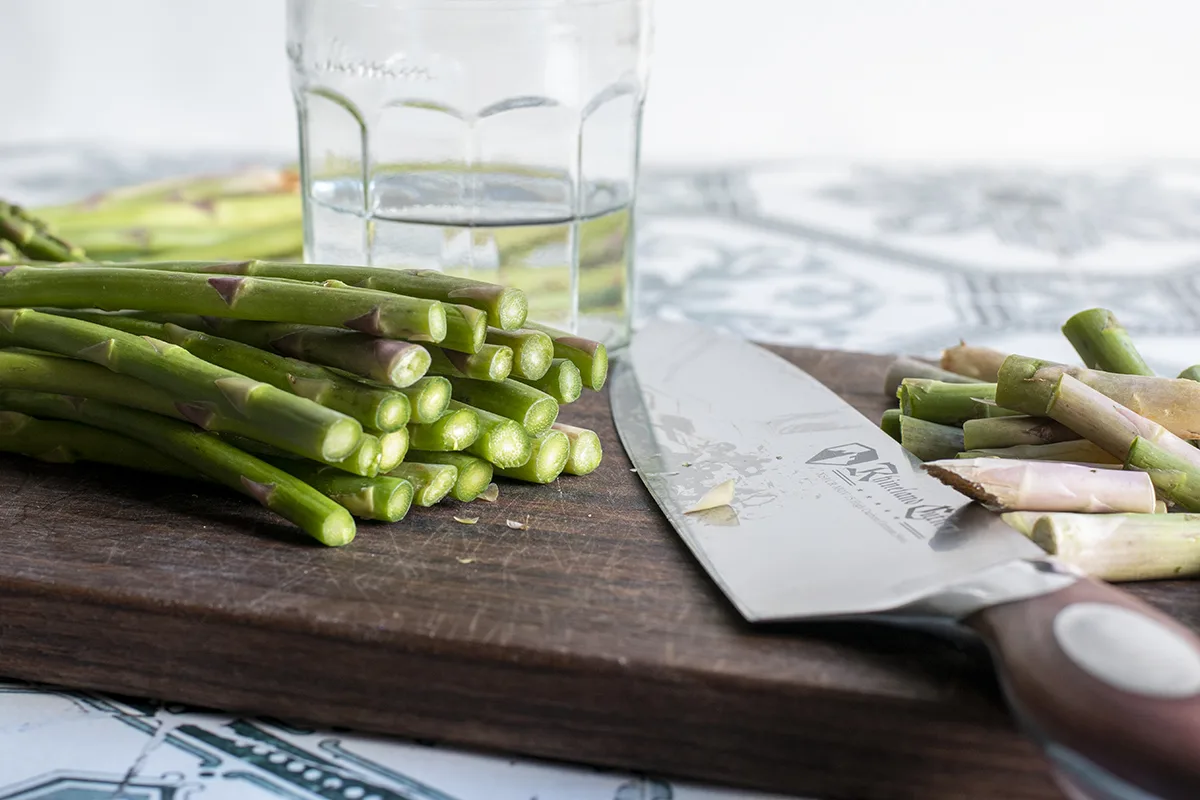
Do you prefer bite-sized pieces you can pop in your mouth straight from the jar? Or do long, tender spears you can nibble appeal to you? You can easily do either. However, it’s worth noting that you can fit more bite-sized pieces in a jar than full-size stalks. (But don’t let that deter you, I’m a big fan of whole stalks, I like using them in martinis instead of olives.) If you have plenty of asparagus to work with, make a jar of each.
Start With One Jar of Pickled Asparagus
This recipe is by the jar, which is always a great place to start for fridge or quick pickles, as you don’t have to have bushels of your chosen vegetable on hand. Naturally, you can scale the recipe up if you’re making several jars.
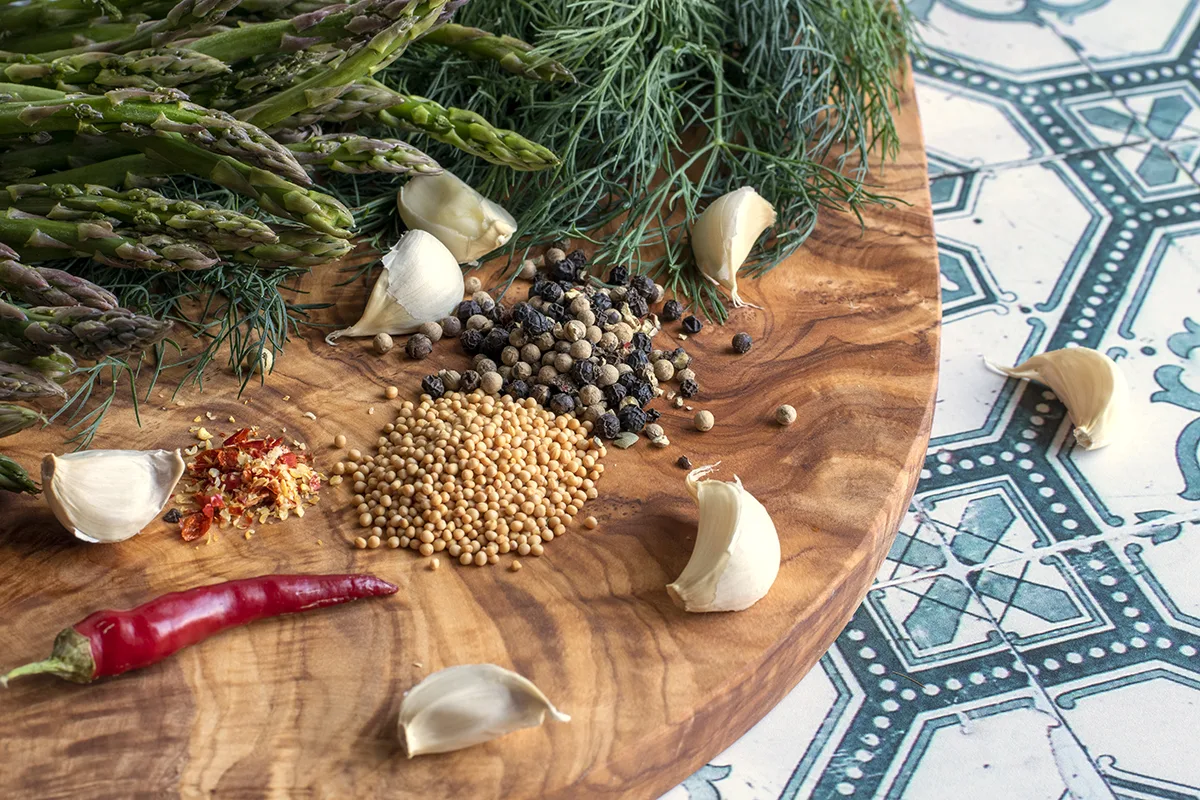
Ingredients
- ½ cup of water
- ½ cup of white vinegar (or vinegar of your choice with at least 5% acidity)
- 1 tsp of pickling salt (or 2 tablespoons of kosher salt)
- 3 whole garlic cloves
- 10 peppercorns
- 1 large head of dill, ½ cup of chopped fresh dill, or 1 tsp of dill seed
- Pinch of red pepper flakes, or if you want to get crazy, toss a whole hot pepper in there
- Asparagus trimmed so the stalks will fit in the jar or cut into bite-sized pieces
- Clean mason jar or jars with a lids
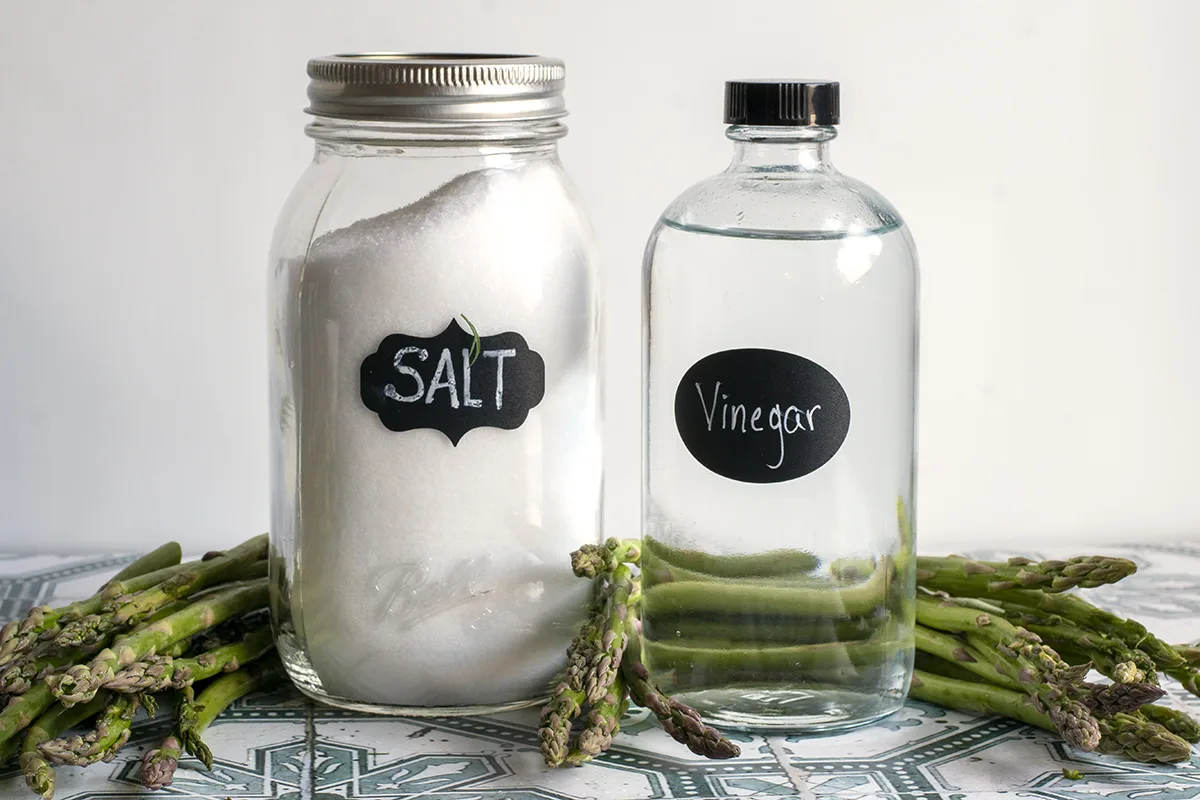
Instructions
- Make your pickling brine by heating the water, vinegar and salt in a small saucepan until boiling. Turn off the heat and cover.
- In a clean jar, add the garlic cloves, dill and spices. Gently pack the jar with spears or pieces, leaving ½ inch of head space at the top.
- Pour the hot brine over the spears, again, leaving ½ inch of head space. Wipe the rim clean, and put the lid on. Let the jar cool completely before storing it in the fridge. The pickles are ready to enjoy the next day. However, their flavor improves drastically over a matter of a couple of weeks.
Note: If you like extra crispy pickles, let your brine cool completely before adding it to the jar, as hot brine will cook the asparagus a bit. You’ll have to wait a bit longer for the best pickle flavor, but it’s worth the wait to nibble on ridiculously crisp asparagus pickles. Especially if you’re swizzling them in a gin martini before nibbling them. Ask me how I know.
Your quick pickled asparagus will keep for up to six months in the fridge.
But let’s be honest with each other; these suckers will be long gone way before six months have passed. Use a clean utensil to remove them from the jar rather than your fingers. This way, you won’t introduce bacteria to the jar, which will cause spoilage.
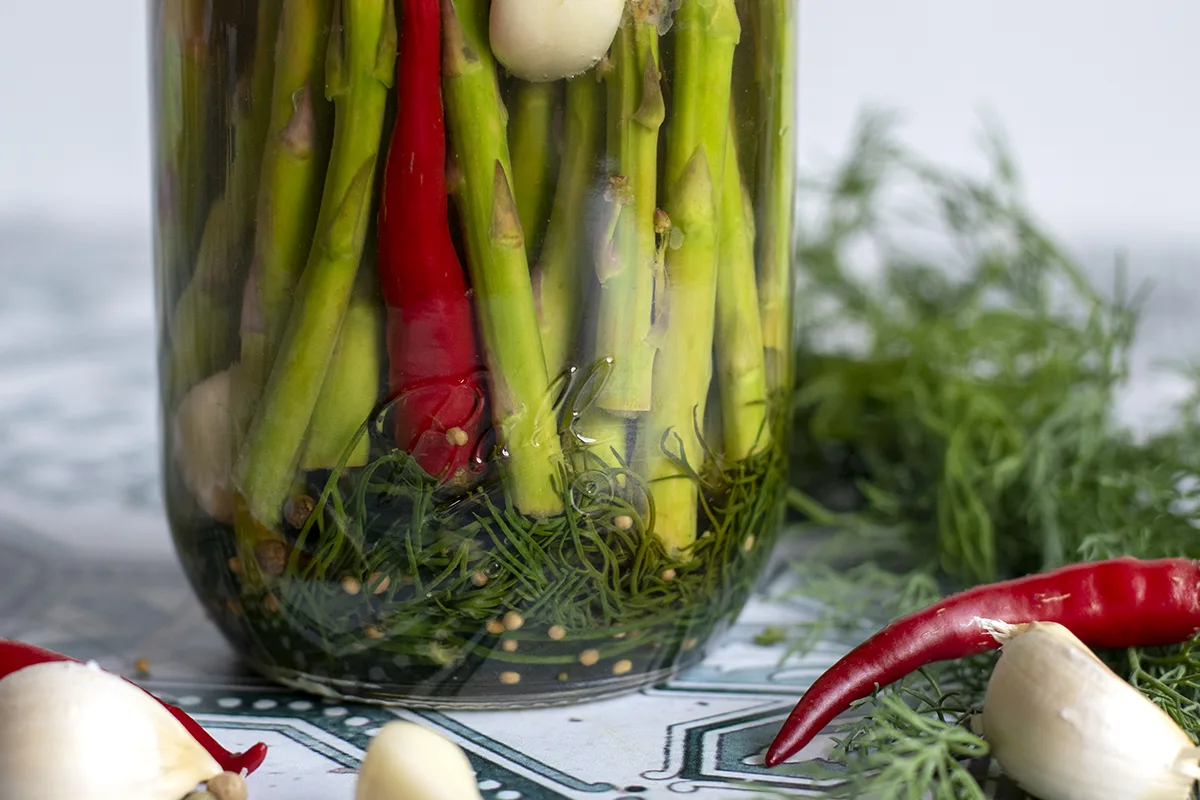
And that’s all there is to it. What are you doing sitting here still? You could have made pickles by now. If you need even more pickled goodness in your life, give our five-minute fridge pickles a try or how about an entire jar of pickled garlic?

Get the famous Rural Sprout newsletter delivered to your inbox.
Including Sunday musings from our editor, Tracey, as well as “What’s Up Wednesday” our roundup of what’s in season and new article updates and alerts.

